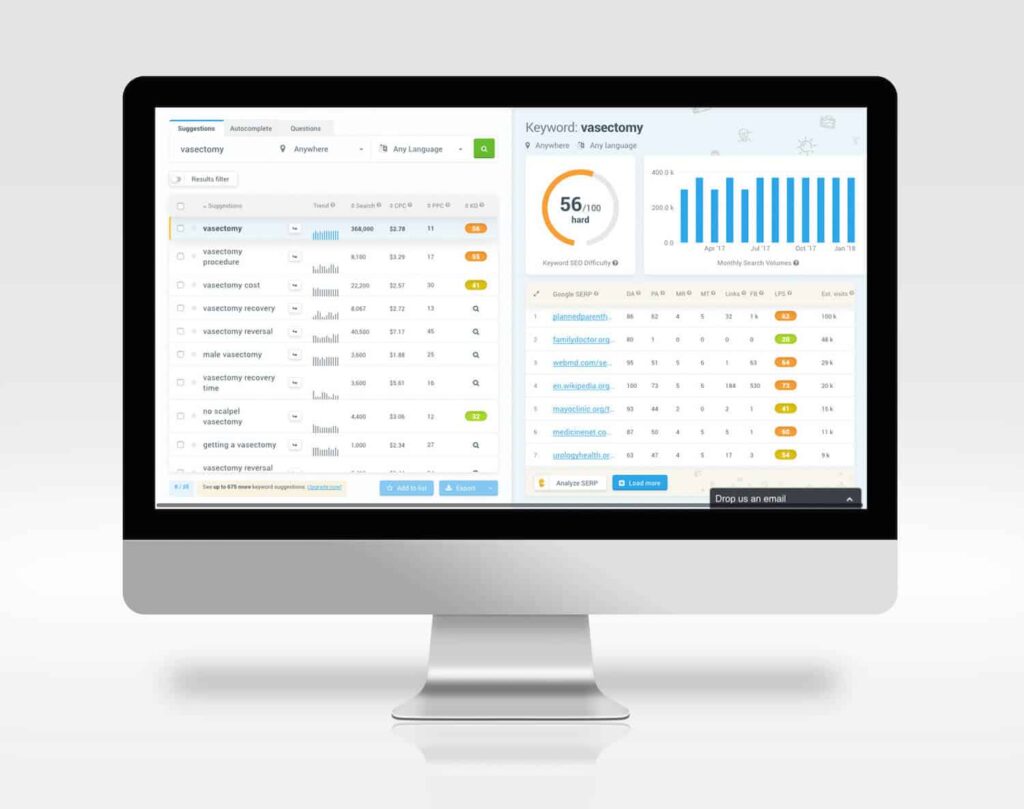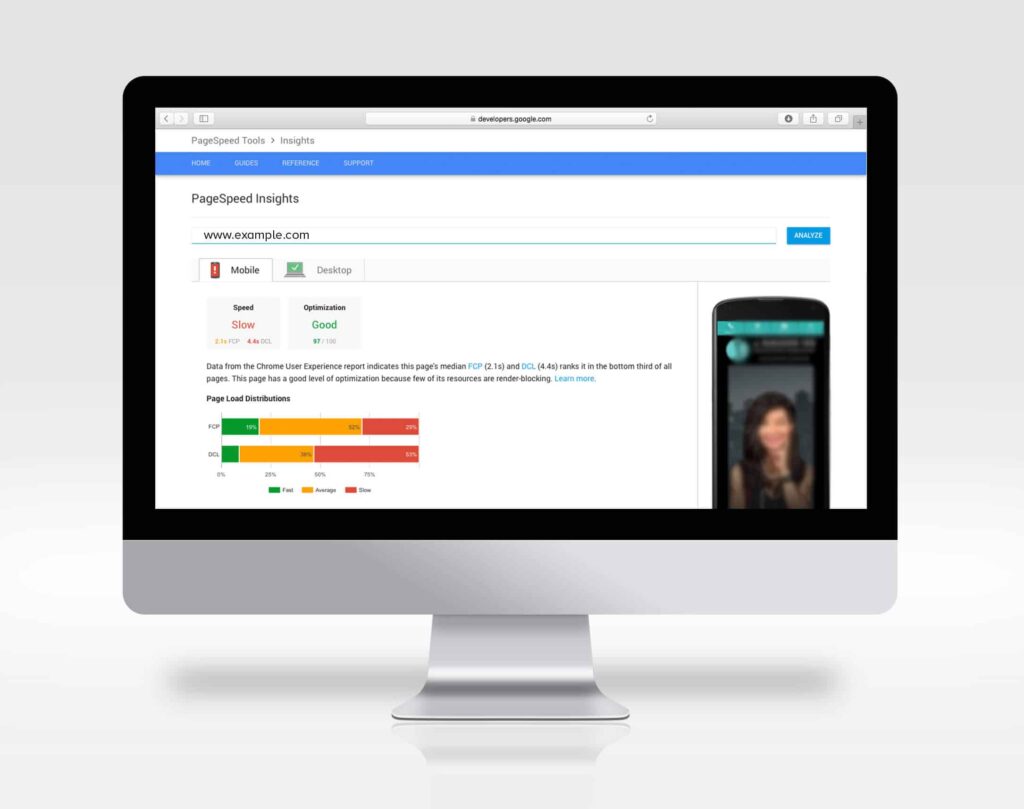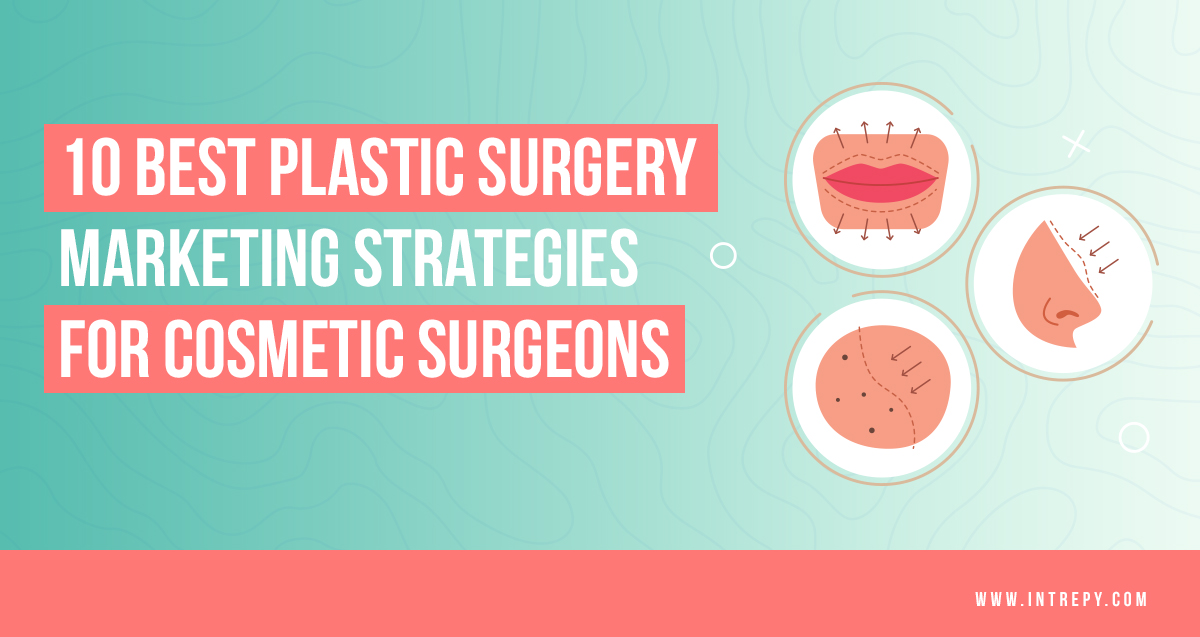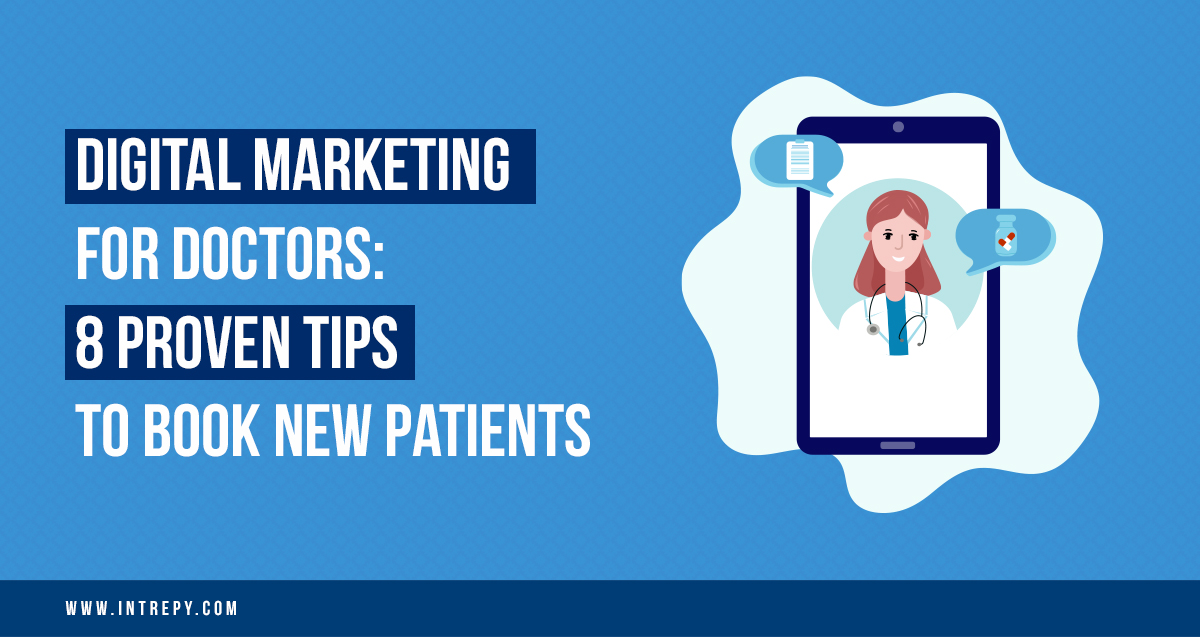The Best Medical Website Design Tips to Grow A Practice
Your medical website is probably the single most important digital marketing asset for growing your practice. It is the “digital billboard” that serves as the voice of your potential patient base.
That is why it is so critical when a doctor is going through the medical website design process that they focus on some key design elements that will help attract, engage and convert potential new local patients to grow their practice.
We have examined dozens of components of the best medical website design and came up with 9 tips that you should strongly consider adding or incorporating in your website to make sure it is built to generate new patients.
1. Website is Fully Responsive on Mobile & Tablets
This may be the most critical tip that will be addressed in this post and for that reason, it has been placed right at the top. Patients are visiting your website from their mobile device more than desktop; therefore, your healthcare web design needs to be just as functional on small devices as it is on the desktop.
Make sure your font sizes are big enough and the buttons used on your site are sized to make it easy to click them. Also, take a look at your menu and make sure it is user-friendly for people on phones and tablets. You will lose potential patients immediately if they pull up your site and find it is not built to function properly on their phone.
2. Highlight Your Featured Services on the Home Page
This may seem like a no-brainer but you need to understand your potential patient base and exactly what services they are most interested in. There is no need to have every treatment or service you offer on your home page. Down select and create a section the features 3-4 services or treatments your practice offers that set you above the rest.
Think of this as a sales opportunity to grow high revenue procedures or differentiators that will entice and attract new patients. Are you a Podiatrist that can help rid a patient of painful bunions? Maybe you’re a Urologist that offers a no-scalpel vasectomy that reduces patient recovery time?
3. The Website has an Active Blog Area
A blog is a vital healthcare marketing component of any medical or dental website. A blog is the vehicle to house the content marketing strategy for your medical practice and will be the driver for local SEO, new website traffic & more.
Often times practices forgo a blog completely or choose to neglect and underutilize the creation of new content. No practice would say that they do not want to show up at the top of Google search results. Yet so many choose to not develop a content marketing strategy.
Here is the deal: content marketing and SEO go hand in hand. The only way to develop a successful medical SEO strategy is by creating engaging content that patients want to read and putting it on your blog. That does not necessarily mean you have to create long-form blog posts. Maybe video is the best fit for your practice.
Whatever it may be a blog is a critical component of a local SEO strategy and generating new monthly website visitors.
4. Develop a Staff Page that Features Each Provider in the Practice
Nearly 50% of all new patients search for information on specific providers before scheduling an initial appointment. Therefore, a medical practice website design needs to make sure it has its entire group of providers displayed on the website.
To garner the highest level of SEO give each provider a dedicated page to house their bio, credentials & more. This will ensure that when someone does a provider-specific search online it is returning the practice website as high as possible and usually above website like Healthgrades & Vitals.
5. Proper Medical SEO & Keyword Research
A solid search engine optimization (SEO) strategy for a medical or dental practice starts with the foundation of your website. The best medical website design agencies know this and build it into a website from the ground up. When developing the content for a website there should be substantial keyword and competitor research.
You may think that you know exactly what a patient is searching in regards to a particular treatment or ailment but you cannot know for sure unless you perform the proper keyword analysis. This will aid in ranking your website for targeted treatments that you offer.
Also, medical SEO needs to be done on a page-by-page basis to ensure H tags are correct, meta descriptions have been done properly, images are named and optimized, inner links are set & more
If the website has already been created it may not be a bad idea to look into performing an SEO site audit prior to updating the medical SEO of your website.
6. Patient Testimonials are Prominently Featured
Patient reviews are an extremely powerful psychological influencer to generate new patients for a practice. Just like any other business that provides a group of services potential customers want to hear from others who have tried the services.
Nearly 70% of patients form an opinion of a medical practice by reading 6 reviews or less. Not to mention that reviews are one of the top 3 most important ranking signals for search results.
A medical practice needs to formulate a strategy to generate new patient reviews and showcase them on their website homepage and a testimonials page. Taking it a step further and creating a video testimonial can be that much more impactful.
7. Use Lead Forms to Make it Incredibly Easy to Request Appointments
People are inherently lazy. This is especially true when it comes to giving up their personal information to schedule something online. With that said a well-designed medical website makes it simple for a patient to request a new appointment on their website.
Add a button to your main menu, utilize the universal footer, add it in the sidebars and more. Make sure a “Schedule Appointment” button is never more than a quick scroll away. Some medical websites will still point every button toward their contact page but this adds an additional step to fill out a form. Think about taking advantage of a popup functionality so a patient does not even have to leave the current page they are on if they decide to request an appointment.
8. Encourage Potential Patients to Sign Up for Your Newsletter
An active practice newsletter is a phenomenal way to keep an ongoing touchpoint with current, past, and potential patients. You can distribute new blog posts, push the latest specials or promotions and remind past patients to come in for check-ups.

Via Kavali Plastic Surgery Practice
An easy and simple way to grow the practice email list is to allow patients to sign up for the newsletter on the website with a clear call to action. Another great way is to add a checkbox to every form on the website that says something like “Sign up to receive our newsletter” and it is default selected.
Email is still a highly viable marketing strategy and should not be overlooked by your practice. Make it easy for new website visitors to stay in contact with the practice and convert into new patients down the road.
9. Showcase Patient Before & Afters
While this may not precisely apply to every specialty or practice type it is critical to find a way to showcase patient case studies for specific treatments you offer. Patients like to see cases that are similar to their own and the actual results a patient has experienced.
If you offer aesthetic procedures make sure you have a substantial amount of before and after photos for each procedure and a broad range of ages and both sexes.
If a before and after gallery does not make sense you can look at working with a patient anonymously to develop a case study that you can publish on your website about a positive outcome from a given treatment protocol or ailment.
Example: We have an Infectious Disease physician that has a unique approach to treating Lyme disease patients. He often publishes first-hand stories of patients that had gone years undiagnosed or in chronic pain but after seeing him had turned the corner and gotten their quality of life back. These stories resonated with Lyme disease patients all over the US and even with the flagship Lyme disease organization that began to feature him in articles. As a result, he became one of the most sought-after physicians to diagnose and treat the disease having patients flying in from coast to coast.
10. Include Videos that Feature Your Providers
Video has quickly become the preferred way to digest information online. According to Cisco, as early as 2019 85% of online traffic will be generated by videos. They also carry a substantially higher level of engagement as compared to images or text.
Having videos of a provider explaining treatments or approaches to patient care on the website is a great way to not only increase site traffic but help to establish a level of trust before the patient ever even books an appointment.
Make the videos no more than 60-90 seconds in length and make sure you add practice branding such as the logo and physician name to each video for brand continuity.
11. The Website is Optimized for Speed
Website page speed and load times are other important medical SEO ranking factors. Not to mention a slow website will have a much higher bounce rate and lower lead generation.
There is an expectation level amongst online consumers that a website will load in 2-3 seconds and every additional second greatly increases the percentage of page abandonment. Do not win the battle of getting a patient to click on your social media article or open your email only to lose them because your medical website takes too long to load. To find out if your website is taking too long to load use a free tool like Google’s PageSpeed Insight.
It will alert you to any glaring medical website design issues that need to be fixed and then you can go outputting a plan in place to correct the issues. Finally, make sure the website is using caching for all returning visitors. Caching in simple terms allows your browser to save major aspects of a website you visit so the next time you return the whole site does not need to be loaded again.
This makes a website load time much faster for all returning visitors. A good healthcare website design agency will include it within their build-out.
Wrapping Up Medical Website Design Tips
Hopefully, you can take these medical website design tips and implement them on your website to improve the overall performance and increase new patient leads. Remember always try and view your website from the patient’s point of view and consider what they deem important and what information they need to make an educated decision and schedule an appointment.
When integrating any of these changes pay attention to website analytics to monitor what is generating the best results. Test, retest & test on more time and new healthcare marketing strategy and the same go for changes and additions to a medical website.
If you are looking for a healthcare marketing agency to help you update your medical website design, we would love to help! Give us a call 678-250-4757 or fill out our contact form.






